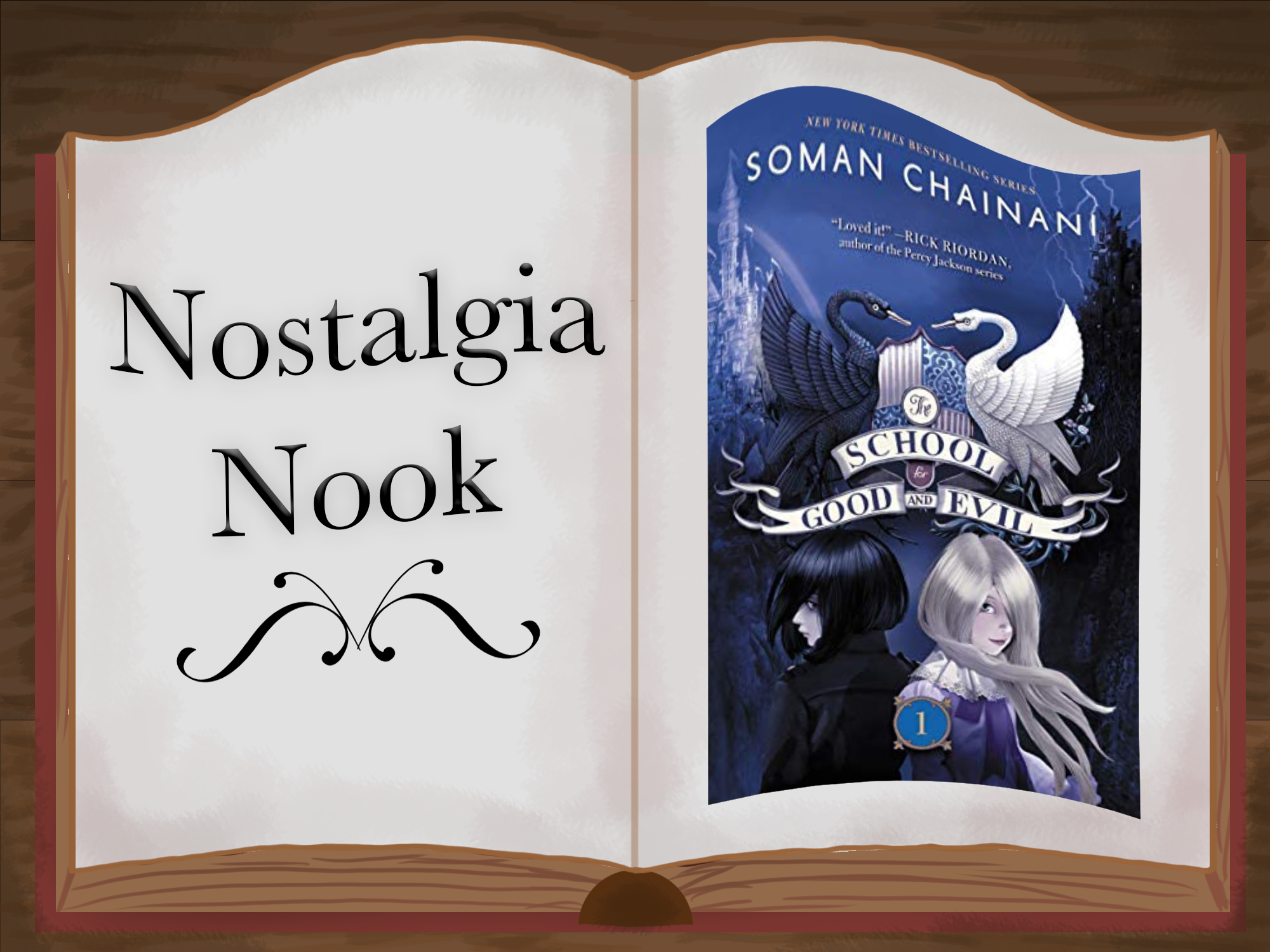Welcome to “Nostalgia Nook”! In this column, I revisit popular children’s literature from the early 2010s. I will discuss the book’s highlights, examine the culture that developed around the book, and check in on where the books are now. I hope that I will be able to remind you of iconic books, forgotten moments, and re-spark your love for children’s literature.
“In the forest of primeval
A school for Good and Evil
Twin towers like two heads
One for the pure
And one for the wicked
Try to escape you’ll always fail,
The only way out is
Through a fairytale”
“The School for Good and Evil” protagonists Agatha and Sophie are told that they cannot leave the school unless they completely live out their fairytale, whatever that may be. And to make matters worse, if they fail their classes, they will be turned into fairytale sidekick creatures!
Published in 2013, “The School for Good and Evil” by Soman Chainani follows Agatha and Sophie as they are snatched away from their hometown and taken to the titular school, where students learn to be the heroes or villains of fairy tales. The school’s attendees are the children of famous fairytale characters, such as King Arthur or Captain Hook, and they learn how to win the good-versus-evil fight in their own fairytale post their graduation.
Outcast and oddball Agatha finds herself at The School for Good, where she learns skills befitting a fairytale princess; graceful and beautiful Sophie, on the other hand, finds herself at The School for Evil, where she learns how to be a witch. The story follows their adventures and respective struggles to fit into their schools. Neither Agatha nor Sophie believe that they were dropped off at the right school: Sophie yearns for The School for Good, while Agatha yearns for home; and both frequently fail their classes.
Since its publication in 2013, seven more books have been published in the series, including a sequel saga (“The Camelot Years”), a prequel (“Rise of the School for Good and Evil”) and even a student guidebook (“The Ever Never Handbook”).
This week, a Netflix movie adaptation of “The School for Good and Evil” was released, starring Sophia Wylie as Agatha and Sophia Ann Caruso as Sophie. The show also features talents such as Cate Blanchett and Kerry Washington in key roles.
While still enjoyable, the Netflix adaptation diverges in its plot from the books, combining arcs across books in the interest of fitting more content into less. Perhaps most disappointing for fans of the novels is the limited screen time given to Dot, Hester and Anadil, Sophie’s friends at The School for Evil. Despite the film’s 2 hour and 27 minute runtime, limited appearances by Sophie’s lovable evil friends meant that their characters and the dynamics between them were nowhere near as fleshed out as they were in the novel.
Generally, however, the movie still manages to preserve the spirit of the books. The story still revolves around the friendship between Agatha and Sophie, and the costumes, acting and dialogue convey the campy, over-the-top good-versus-evil dynamic of the books.
The costumes were my favorite part of the movie: from Agatha’s pink, floral dress to the sack-and-rope outfit that Sophie fashions herself, the costumes were both fun and true to character. I was also delighted to see the school itself brought to the screen and to see the similarities between the school in the movie and how I always pictured it while reading the books. The School Master’s tower especially felt as if it had emerged straight out of my imagination.
The final book in the series, “Fall of the School for Good and Evil,” is expected to be published in 2024, bringing the series to a close after over a decade. The series’ long span has allowed it to connect with people of many different ages. My little cousin, who is five years younger than me, is also a big fan of the series. In the days leading up to the movie release, we exchanged many excited texts, gushing over the trailer and discussing which moments we hoped would be included in the adaptation.
As a kid, and still now, I was so attached to “The School for Good and Evil” because I loved the boarding school setting, the lovable characters and friendships, the rapid pacing and the exciting plot twists. One of my favorite parts of the plot came from Sophie: given her ‘evil’ nature, I always had so much fun seeing the surprising ways that she would react to situations, especially when she acted antagonistically.
And as fans who made it through the series know, the School Master twist was iconic. To this day, I still haven’t recovered. I was glad it made it into the movie, even if it meant the shorter buildup made the reveal less shocking than it was in the books.
Given that many childhood classics such as “The Mysterious Benedict Society,” “A Series of Unfortunate Events,” “Avatar: The Last Airbender” and “Shadow and Bone” have either been recent or planned adaptations, it is a great time to revisit these stories, either by the page or screen. Getting to watch a “The School for Good and Evil” adaptation has been a fun trip down memory lane that I would recommend to any fan of the books.
Editor’s Note: This article is a review and includes subjective thoughts, opinions and critiques.
